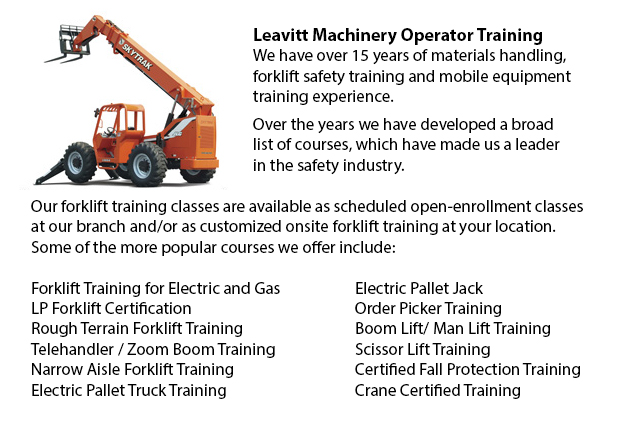
Telehandler License British Columbia - A telescopic handler or telehandler is a machine that is commonly utilized in agricultural and industrial applications. It has a similar appearance to a lift truck and even works in a similar way, although, the telehandler is more of a crane than a forklift. It has a telescopic boom that can extend upward and forwards from the motor vehicle. The boom has the capability to fit one of various accessories including muck grab, pallet forks, a bucket or a lift table.
The most popular telehandler attachments are pallet blades. The telehandler is utilized in order to move merchandise in sites where the loads cannot be transported by a typical lift truck. Telehandlers are particularly helpful for placing loads on rooftops for example, or for removing palletized cargo from with a trailer. Many of the jobs that a telehandler can accomplish will otherwise need a crane and this particular piece of equipment could be expensive, impractical and not always time efficient.
As the boom raises or extends while bearing a load, it likewise acts as a lever. Even with the counterweights in the rear, this causes the machine to become more and more unbalanced; hence, the advantage of the telehandler is really its greatest limitation. As the working radius increases, the lifting capacity decreases. The working radius is defined as the distance between the front of the wheels and the center of the load.
For example, a telehandler with a 5000 lb capacity with the boom retracted could safely lift as little as 400 lb as soon as it is fully extended at a low boom angle. The equivalent equipment that has a 5000 lb lift capacity and the boom retracted could support as much as 10,000 lb with the boom raised to 70 degrees. The operator has a load chart to help determine whether a specific lifting task could be accomplished in an efficient and safe manner. This particular chart takes into consideration the boom angle, the weight and height.
A lot of telehandlers come outfitted with a computer which utilizes sensors in order to monitor the vehicle. These sensors will warn the operator and some are capable of cutting off further control input if the limits of the vehicle are exceeded. Some telehandler models are likewise equipped with front outriggers which are called mobile cranes. These greatly extend the lifting capability of the apparatus while it is stationary.
-
Warehouse Forklift Safety Training British Columbia
Warehouse Forklift Safety Training British Columbia - The corporation would face claims for liability when damage and injuries are sustained in an accident at the workplace. Warehouses can be a hazardous place to work for its workers, making employee... More -
Loader Operator Certification British Columbia
Loader Operator Certification British Columbia - Courses Offered For Getting Loader Operator Certification - Certification for forklifts are required to guarantee the safe operation of forklifts for those employers in industrial, warehouse or constru... More -
Crane / Overhead Crane / Self-Erect Crane / Truck Mounted Crane / Hydraulic Cranes Training in British Columbia
Bridge cranes or likewise called overhead cranes are actually a type of industrial material handling crane making use of a line and hook device that runs on a horizontal beam running along two widely separated rails. Numerous overhead cranes could be... More -
Scissor Lift License British Columbia
Scissor Lift License British Columbia - The operation of scissor lifts carries an inherent chance of danger. Whichever type of powered machine requires correct handling to prevent accidents causing injury or damage. Companies need to make certain tha... More -
Heavy Equipment Training Schools British Columbia
Heavy Equipment Training Schools British Columbia - There are a lot of heavy equipment training schools to select from. If you want to get to the best, it is important to check various aspects of the school in order to ascertain the level of educatio... More -
Telehandler Training British Columbia
Telehandler Training British Columbia - Telescopic handlers usually called telehandlers for short, are an extremely popular piece of heavy construction equipment. They are commonly utilized in the construction and agricultural trades. These machines... More -
Forklift Training Courses British Columbia
Forklift Training Courses British Columbia - When forklift operator safety training is tailored for illiteracy, training time is lessened by 50%. Forklift training certification, lift-truck operator driver safety training evaluation, and train the tr... More -
Heavy Equipment Operator Training British Columbia
Heavy Equipment Operator Training British Columbia - Heavy equipment operator training facilities which provide quality standards in the business, providing field performance work and added machinery training are highly sought after training features... More

Forklift Training British Columbia
TOLL FREE: 1-888-254-6157
forklifttrainingbritishcolumbia.com
Email Us
About Us


